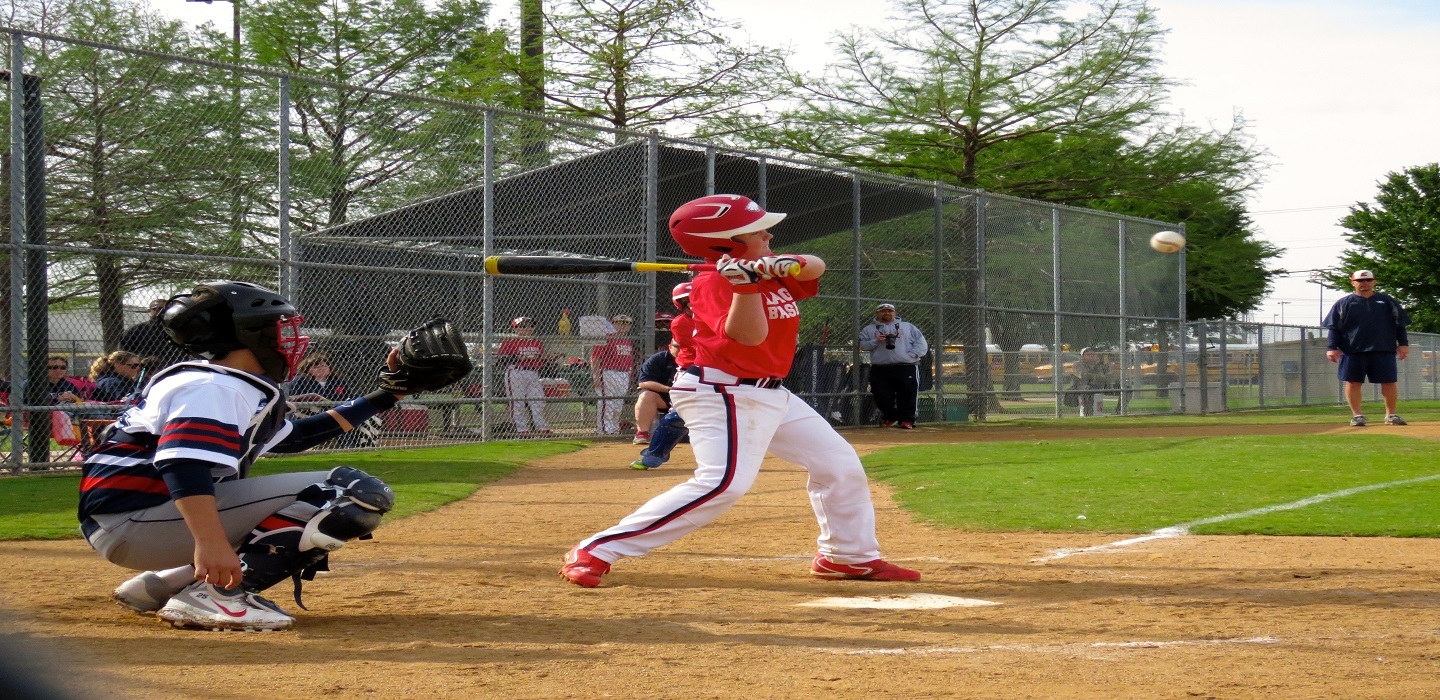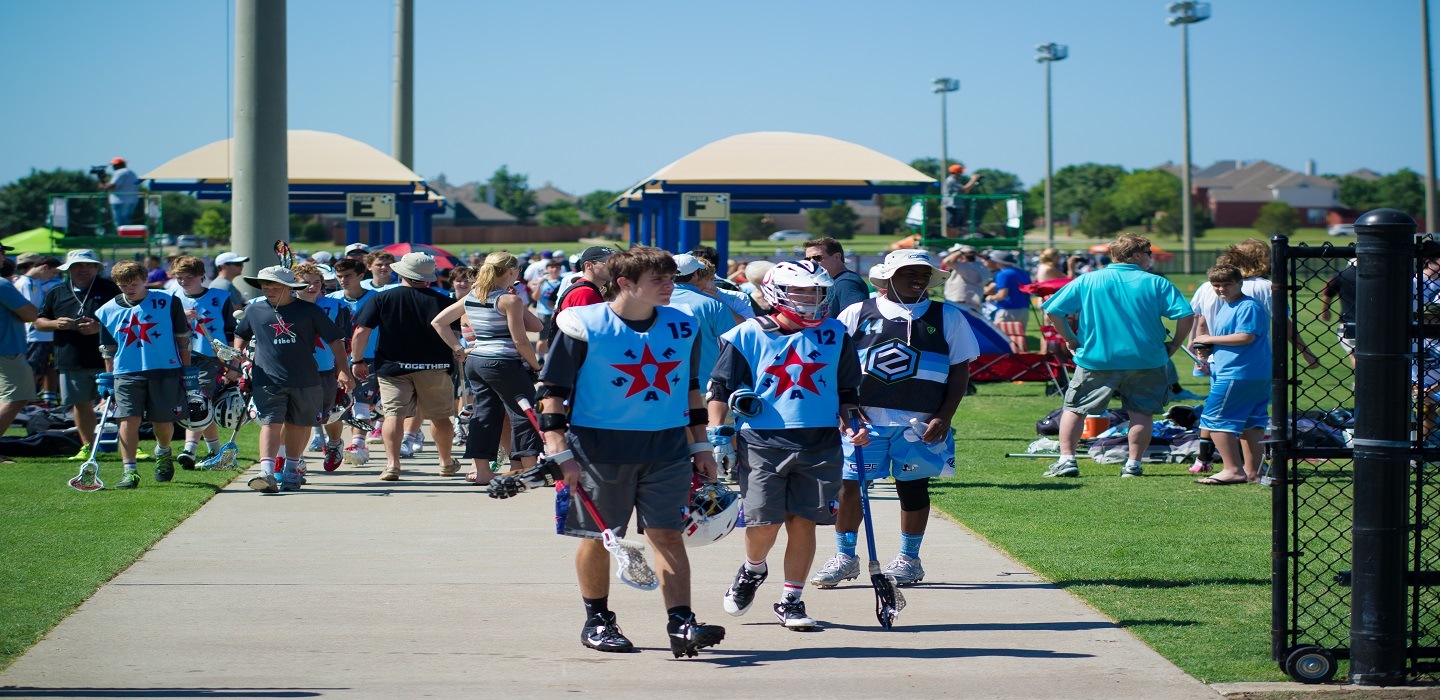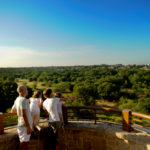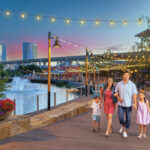Plano was recently the focus of a study by the Trust for Public Land (TPL), an organization whose work is to identify the wide range of community benefits from local parkland and assign a humanitarian and dollar value. The TPL periodically conducts studies in an effort to measure economic benefit and fiscal impact of parkland conservation on the local community. Certainly, every city is different and some have planned for parks more than others, but the advantages of community parks is universal.
Park Planning
Plano’s commitment to farsighted, comprehensive planning is rewarded with unmatched community access to neighborhood parks as well as the ability to produce substantial economic impact and measurable revenue from the large parks used for leisure activities such as local sport leagues and tournaments. Sports-related tourism is a critical component of the tourism economy in Plano, according to the TPL study.
Large parks with multiple fields, plenty of parking, concession areas and public restrooms are commonly called tournament parks. Well-maintained and properly marketed tournament parks draw valuable sport tourism. The benefit of the economic impacts of visitor spending on sales tax revenue and from hotel room stays on hotel occupancy tax is an aspect that requires long-range planning and in the short-term, commitment to a skilled and experienced athletics staff.
The City of Plano Parks and Recreation Department was recognized for just those things when the National Recreation and Parks Association awarded the Gold Medal Award in 2015. The award honors communities throughout the U.S. that demonstrate excellence in long-range planning, resource management and innovative approaches to delivering superb park and recreation services with fiscally sound business practices.
Benefits of Parkland to Community
The City of Plano provides and maintains its parks, first-and-foremost, for use by local residents. Humanitarian benefits cited by the LPT are improvements in personal health, reduction in storm water runoff, filtration of air pollutants by vegetation and increased tax revenue from enhanced value of privately owned property located near parks and recreation facilities. Residents and visitors benefit from the parks, trails, sport fields and facilities and have access to an array of free or low-cost recreational activities.
Park use naturally translates into increased physical activity at a level sufficient to generate measurable health benefits, resulting in medical care cost savings. Parks reduce storm water drainage by capturing precipitation, slowing its runoff and reducing the volume of water that enters the storm drainage system. Trees, shrubs and grasses remove air pollutants that endanger human health and damage structures.
Plano’s parks and recreational facilities are often cited as contributing to a highly valued quality of life that consistently draws major corporations to make Plano their home. Nearly every study by the LPT reports that an increase in the value of property near parks produces corresponding increases in property tax revenue. Across the country, there is a perception, that people like living near parks and nature trails and they will pay more for those home sites.
Sports-Tourism
The strategic planning that put Plano’s “tournament parks” in place, ahead of neighborhood and commercial development, created a youth recreational park “mecca” in the fast-growing business of youth recreational sports. Sport planners from all over the world are familiar with the assets of Plano’s park system and Sports Planning Guide recognizes Plano as having world-class venues and support for youth tournaments. Combine well-planned and maintained sport fields and facilities with excellence in event facilitation and coordination and Plano has a park system with a virtual queue of event company hopefuls lining up for a weekend spot.
Coordination by both the Plano Parks and Rec Athletics Department and Visit Plano, the city’s convention and visitors’ bureau, carefully manages access to these parks with respect to community access and with a goal to produce maximum economic impact from sport tourism. It’s the “profit’ of the economic impact that greases the wheels of maintenance and improvements for parks throughout the year, so local residents can enjoy good quality sport fields and athletic facilities that otherwise would not be available.

Plano Parks and Rec works closely with its partners to balance programming for local resident enjoyment with access for professional tournament companies with the capability of bringing in visitors for overnight stays. The city has partnered with local non-profits, such at Plano Sports Authority and Plano Youth Soccer Association, to provide local league programming and even funding for park improvements most years. These partners also provide valuable information on participation numbers and interested non-resident access that benefit coordination efforts.
A good balance is achieved because the primary focus is community benefit in the form of significant local leagues and competition programming and only then are tournaments shoe-horned into the openings in league schedules. For the most part, Plano requires sport tourism events to work around local league schedules. Local sport displacement is rare and allowed only once a season at each park and must be announced before any league season so the leagues can plan schedules. Tournament companies are carefully vetted to assure that prospective tournaments or showcases can provide enough economic impact to warrant a schedule change for the locals.
Economic Impact and Development
These weekend tournaments absolutely draw hundreds of thousands of participants and spectators every year. According to the TPL study, visitors for park venue events spent $588 million in 2015 resulting in $21.1 million in local tax revenue and $35.9 million in state tax revenue. In order to justify park use by non-residents and because the parks and rec department is financially supported by the hotel occupancy tax, Visit Plano tracks the incremental gains in the hotel occupancy tax and also local sales tax for these events that create tens of millions in economic impact and financial benefit to city businesses.
Plano parks also draw a large number of visitors to our nature parks and preserves for outdoor leisure activities. Open and carefully tended/untended prairies, woods and lakes are becoming more valuable as open spaces disappear into economic development. Plano residents are lucky to live in a city that parlays a valuable park system into an affordable and healthy lifestyle.
I can personally testify that visitors to our city will remark that they would move their family to Plano if was possible. Our goal for sport tourism is to make it nice for visitors. We want them to stay in a hotel that supports their budget, stay near the fields where they play and feel safe being out-and-about enjoying the family-friendly restaurants, shops and attractions our city has to offer.
We know that if they like visiting here, they might want to live here and bring their companies and jobs with them. Economic impact is our goal for sport tourism but economic development is often the result.
Cover photo credit: Nan Palmero
Baseball photo credit: Visit Plano






